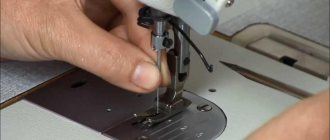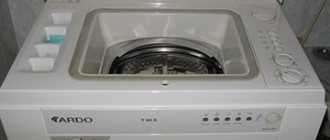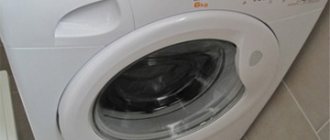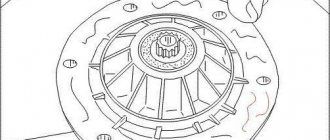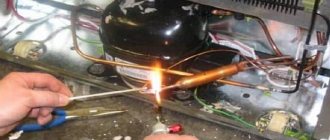Main device of the dishwasher
If you want to know how an Indesit, Bosch, Electrolux or dishwasher from any other brand works, be sure to read the material to the end. Let's start with the most important thing - the heart of the device. It is a powerful motor, sometimes called a circulation pump.
. It circulates water with detergent or rinse aid, taking it from the working chamber and returning it through the rocker arms. As for the rocker arms, they serve as rotating spray nozzles.
The largest element in a dishwasher is the working chamber. It is in it that the rocker arms are located, playing the role of washing elements. There are also baskets where dishes are placed. Baskets can be adjusted in height, and some manufacturers provide them with a transformable design, which makes it easier to store kitchen utensils of non-standard sizes.
- Filter – provides filtration and removal of solid contaminants (food residues);
- Drain pump (also known as drain pump) – removes dirty water outside the dishwasher;
- Drain hose - its purpose is clear without any comment;
- Aquastop - it is not present in all dishwashers, but it allows you to protect against leaks. The executive element of this unit is a solenoid valve located at the very end of the inlet hose.
Also in the device of any dishwasher there is the following combination:
- Inlet hose - it is connected to the water supply system, through which cold water flows into the device (or hot water, if someone connected the equipment to a hot water supply pipe);
- Solenoid valve - participates in filling water, shutting off or opening its supply;
- Water heater - classic or instantaneous. The latter helps reduce cycle times by heating water instantly rather than gradually.
Please note that in front of the inlet hose there is a simple coarse filter in the form of a metal mesh
. It plays an important role in the design of a household dishwasher, filtering out large contaminants that can enter the dishwasher from the water pipe.
As we can see, the design of dishwashers is extremely complicated. And all this despite the fact that we have not yet touched on a number of important organs, nodes and systems. Ion exchanger is a very important part responsible for water softening
. The thing is that salts dissolved in hard water interfere with normal washing. The exchanger, which operates on the basis of a special ion exchange resin, allows you to replace magnesium and calcium ions with sodium ions, resulting in softer water.
A container is installed in conjunction with the ion exchanger, into which salt or substances replacing salt are poured - they help restore the amount of sodium ions in the ion exchange resin. Salt is taken from here automatically, its amount depends on the settings in the dishwasher. The container holds approximately 1 kg of special salt for dishwashers.
In addition to all this, dishwashers contain pressure switches (water level sensors), thermostats (determine the temperature of the washing mixture), and various touch sensors (in machines with automatic programs). Water inlets for collecting water are also installed here, and there are numerous connecting hoses and clamps. The whole thing is wrapped in a body with effective noise insulation.
We forgot to mention the most important detail in the internal structure of any dishwasher - this is the control board, which is the “brain” for all the filling.
. It is from this that the wires go to the sensors and various electrical modules. A control module works in conjunction with the board, on which knobs, buttons, indicators and other elements are located.
Older dishwashers had mechanical control modules. They are not used in modern technology - their device is based on electronics.
What to do if the dishwasher is still under warranty
For at least the first year after purchase, do not repair it yourself - by doing so, you will deprive yourself of warranty benefits. The warranty period and conditions must be clarified when purchasing household appliances.
If you use detergents that are not intended for dishwashers to wash dishes, warranty repairs may be denied.
During this period, you can work to remove blockages in the dishwasher filters. In addition, it is allowed to clean the holes in the sprinkler rocker arms from dirt and food debris if the PMM begins to wash dishes poorly.
Do not forget that many defects in work occur due to non-compliance with operating rules. The machine may not work only because there is no water in the water supply or someone has closed the inlet ball valve.
Modern authorized service centers have all the necessary tools and spare parts for warranty repairs
Therefore, you need to periodically check: the presence of electricity in the sockets, the water pressure in the water supply and the absence of blockages in the sewer. If you connect the dishwasher to the communications yourself, make sure you did everything correctly. An error may result in the PMM refusing to wash dishes.
Do not take warranty equipment for repair yourself; the store should arrange delivery
Remember: you do not need to take the PMM yourself for repairs to a service center under warranty. This must be done by the store that sold you this equipment, because it weighs more than 5 kg. It is quite possible that technicians will volunteer to repair the device at home.
How to repair a dishwasher
We will not consider all cases of PMM malfunctions - there may be dozens of them. Let's figure out how to fix these typical failures yourself:
- clogged drain or fill system;
- problems with water heating;
- failure to complete a given program;
- poor quality of washing.
The drain or fill path is clogged
This breakdown can be classified as systemic, since it is typical not only for Electrolux machines.
The degree to which pipes, hoses and filters are filled with debris depends on the quality of the water supplied from the water supply. The worse the water, the faster blockages occur. If there are too many minerals in your water supply, they will quickly build up on the inside of the filter, causing it to suddenly clog.
In this case, repairing the car will not be difficult, even if you decide to do it yourself.
Important! To avoid a recurrence of this breakdown, do not forget to remove the filter from time to time and clean it from deposits.
If the water is too hard, treat the machine as carefully as possible: check all elements of the filling system - filters, pipes and hose. You need to do it like this:
- shut off the flow of water into the system by closing the tee valve;
- unscrew the water intake hose together with the filter* from the tee tap and from the PMM body;
- take out a small flow filter (located at the point where the hose is twisted with the equipment body);
- rinse both filters and the hose (if it is difficult to rinse, clean with a special brush) and install back.
*Often users, along with installing a dishwasher, provide a small flow-through filter located on the tap side. If it is installed, then blockages will only occur in the filter attached to the PMM housing.
Important! If you use various water softeners, then in this case they are ineffective, since they protect exclusively internal parts and have nothing to do with filters and hoses.
If we talk about the garbage filter, as well as the hose and drain pipe, their blockages are more frequent. Repairers advise cleaning at least twice a month, and if the machine is used intensively, every 4 weeks. Prevention, which is described in detail in the instructions for your PMM model, will help prevent blockages.
Possible equipment diseases
Some users who have absolutely no understanding of the complexities of household appliances call service centers for every little thing. But many problems can be solved on your own:
- water does not enter the unit;
- water does not drain;
- The product freezes when turned on.
In the above cases, you can try to revive the equipment yourself. First, check whether the water supply tap is open, then check whether the door is closed tightly, inspect the outlet, maybe the reason is its malfunction. Water may not drain due to clogged filters or connection pipes in the drainage system. If everything is in order there, you need a wizard to diagnose all nodes.
Troubleshooting tips
For any type of breakdown, it is important to carry out the most accurate diagnosis. Often, the participation of a master is not necessary. Using the dishwasher operating instructions, you can carry out this procedure yourself. For example, if the equipment cannot be turned on, the Bosch dishwasher repair instructions suggest first checking the voltage level in the network.
A guide to troubleshooting other device malfunctions from the manufacturer Bosch suggests:
- visual inspection of the device;
- identifying the presence of deformation of the power cord;
- checking the correct connection of the water drain and its supply hose.
Sometimes repairing a Bosch dishwasher at home on your own is impossible without partially disassembling the equipment. For example, the SRV55TO3EU model requires mandatory testing of the functioning of internal components, including valve sensors and pumps.
Violation of the integrity of sealing joints
To put it more simply, the rubber gasket burst. This often happens with the main o-ring located on the inside of the door. It is quite simple to determine a violation of its integrity - the damage is clearly visible even with the naked eye. The door seal should be replaced as soon as possible, otherwise there will be constant water under the dishwasher.
READ MORE: PE - error code for LG washing machine, description of errors
It is more difficult to deal with such a problem as liquid leaking from the bottom of the dishwasher. Then it is necessary to dismantle the bottom cover of the device and conduct a visual inspection of the sealing connections of the pump, the pipes installed on the water supply hoses, as well as the tightness of the drainage system. If a crack or abrasion appears, the damaged seal should be replaced. For greater convenience, you can purchase a repair kit for a specific part.
DIY dishwasher repair
As you understand, frequent causes of breakdowns are blockages or incorrect connections. Let's look at how to carry out repairs yourself, without the help of a specialist.
Getting ready for disassembly
In a Bosch dishwasher, as in machines of other brands, all the most important parts are located in its lower part. At first glance, it seems that there is nothing difficult in turning the car upside down, removing the pan and gaining access to everything that is required. In fact, in practice everything looks a little more complicated, but more on that later, first, preparation.
In any business, preparation is the basis of all work; approximately half of all failures are the result of a poorly prepared workplace, tools and materials, as well as a lack of necessary information. To avoid getting into trouble, let's start preparing the workplace. Naturally, few people have a full-fledged workshop at home; if you have one, good; if not, it doesn’t matter either. Do the following.
- Slide the Bosch, Siemens (or other brand) dishwasher out of the niche in the kitchen unit, then turn off the water supply and unplug the power cord.
- Disconnect the inlet hose as well as the sewer hose.
- In a convenient place for work, spread cellophane, a few rags on top, and place the dishwasher on them.
Note! Some people find it more convenient to disassemble the Bosch dishwasher in the bathroom so that water leaking from the machine does not flood the floor. If you have a spacious bathroom, you can try this trick.
The “dishwasher” is ready for disassembly. Now let's prepare the tool. Let us note right away that the dishwasher can be disassembled with almost bare hands, the maximum that we need is this:
- Phillips and flat head screwdriver;
- pliers;
- thin awl.
Watch a video on cleaning equipment:
Couldn't fix your machine by cleaning? Then diagnose the pump. The node is located at the bottom of the body. If there is a problem, just disconnect the wiring of the part, turn it and remove it from its place. After this, a new node is installed.
Heating fault
The first sign of heating problems is poor dishwashing. Fat does not dissolve in cold water, so you will remove wet but dirty utensils from the chamber. Diagnostics will help to accurately determine the cause of the problem. You need to check:
- A heating element;
- Temperature sensor;
- Their wiring and control triacs on the board.
Replacing the heating element in Electrolux PMM models is complicated by the presence of a non-separable heating block. Buying a replacement part will cost 3000-4000 rubles. Think about whether the game is worth the candle. If the equipment is already old, it makes sense to add money to a new dishwasher rather than buy a unit.
Have you decided to make a replacement? Then here is the sequence of steps for disassembling the PMM:
- Unplug the machine;
- Shut off the water supply and disconnect communications;
- Remove the baskets from the hopper;
- Remove the filter and water at the bottom;
- Unscrew the five screws securing the heater;
- Turn the body on its side;
- Remove the bottom;
- The block is connected to a circulation pump;
- Turn off the wiring, release the clamps;
- Rotate the block and disconnect it from the pump;
- Install the new unit in reverse order.
To avoid problems with network outages, connect a voltage stabilizer.
The machine does not wash dishes well
Problems with washing are possible when:
- poor supply of detergents;
- overloading the machine with dishes;
- blocking the sprayer;
- circulation pump malfunction.
Check the powder supply simply. Open the cuvette - if the remains of the tablet are visible in it, it means that water is not entering the compartment well. Check the placement of dishes in the hopper. Maybe a large plate is blocking the compartment, or the supply hose is clogged. Clean the cuvette after each wash to prevent detergent from accumulating in it.
Overload interferes with fluid circulation. When one device overlaps another, water does not wash the surface. There must be a gap between the plates for high-quality washing.
The rotation of the rocker arm, again, can be blocked by the plate. There may be a blockage or foreign object in the way. Clean the sprayer holes - nozzles.
After this, the pump is inspected. If it breaks and does not pass liquid, the unit needs to be replaced. The case will need to be disassembled. Remove the bottom, disconnect the pipes leading to the pump. An example of the repair is shown in the video:
Leak in the system
Damage or corrosion of the unit body leads to leakage. Although this is rare, it is not recommended to do any soldering yourself. Such repairs will not last long, so you will have to completely replace the body.
When Aquastop is activated, water may end up in the sump or leak from the hose connections. Inspect the following items:
- Hose fastenings. Tighten the clamps tighter.
- Pump gasket. If worn, install a new element.
- Door seal. Loss of tightness leads to leakage. Open the door, remove the old seal and install the new one.
Check to see if the pallet is damaged. Then it’s better to put a whole stand. If the float sensor malfunctions, a working part is installed.
PMM does not work, does not turn on
The program stops in the middle of the cycle, the dishwasher is plugged in, but does not respond to pressure. These are the main signs of problems with electronics. Try rebooting the system. Did not help? Then check:
- Condition of the cable and plug;
- Sockets;
- Capacitor.
After the inspection, the control board is diagnosed. Sometimes there is no point in changing a module, since it is expensive. Contact a specialist - he will tell you whether it is possible to repair the board.



